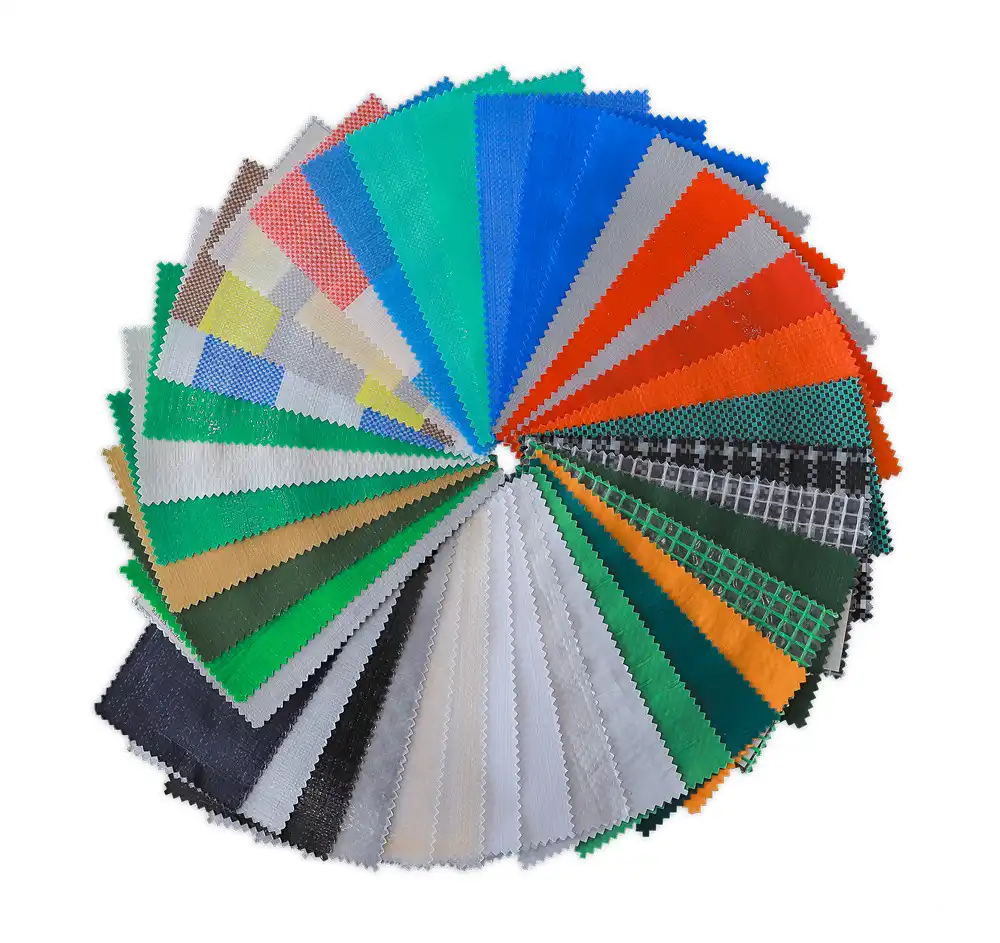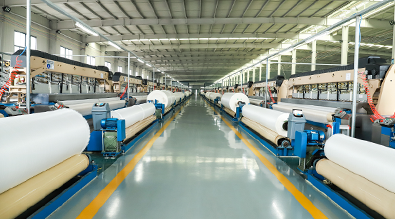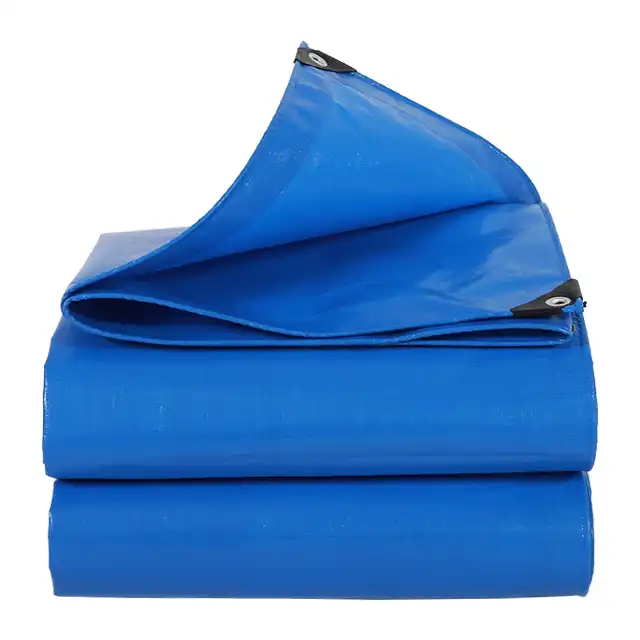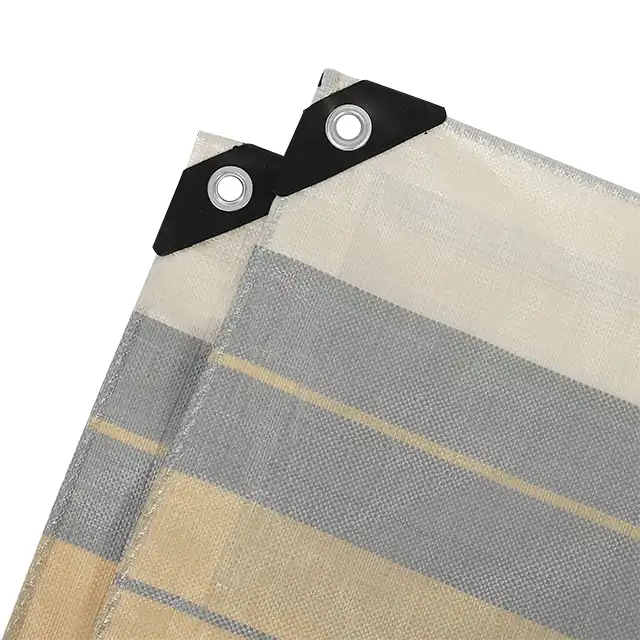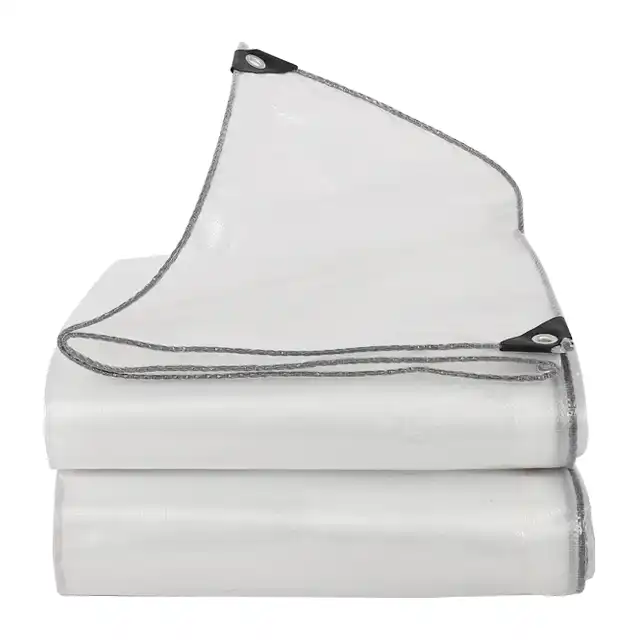7 Practical Tips for Caring for Your PE Awning
PE awnings have become essential protective solutions for countless applications, from truck covers and ship protection to outdoor recreational activities and agricultural uses. As durable and versatile as these polyethylene-based covers are, proper maintenance is crucial to maximize their lifespan and performance. Whether you're using a pe awning for cargo protection, as a leisure tent, or for greenhouse applications, understanding how to care for these materials will save you money and ensure optimal functionality. This comprehensive guide presents seven practical tips that will help you maintain your PE awning in excellent condition, drawing from professional experience and industry best practices to keep your investment protected for years to come.
Regular Cleaning and Inspection Practices
 Maintaining your pe awning begins with establishing a consistent cleaning and inspection routine that addresses both visible dirt and potential structural issues. Professional pe awning manufacturer recommendations emphasize the importance of monthly inspections, particularly for awnings exposed to harsh environmental conditions such as industrial settings, marine environments, or areas with high UV exposure. During these inspections, examine the entire surface for signs of wear, including small tears, punctures, or areas where the material appears to be thinning. Pay special attention to stress points where the awning connects to support structures or where it experiences frequent folding and unfolding. The cleaning process should involve removing loose debris with a soft brush or broom, followed by washing with mild soap and lukewarm water. Avoid using harsh chemicals, bleach, or abrasive cleaning tools that could damage the polyethylene material or compromise its waterproof coating. For stubborn stains or accumulated grime, allow the soapy water to sit on the surface for several minutes before gently scrubbing with a soft cloth. After cleaning, ensure the pe awning is completely dry before storage or folding, as trapped moisture can lead to mold, mildew, or material degradation over time.
Maintaining your pe awning begins with establishing a consistent cleaning and inspection routine that addresses both visible dirt and potential structural issues. Professional pe awning manufacturer recommendations emphasize the importance of monthly inspections, particularly for awnings exposed to harsh environmental conditions such as industrial settings, marine environments, or areas with high UV exposure. During these inspections, examine the entire surface for signs of wear, including small tears, punctures, or areas where the material appears to be thinning. Pay special attention to stress points where the awning connects to support structures or where it experiences frequent folding and unfolding. The cleaning process should involve removing loose debris with a soft brush or broom, followed by washing with mild soap and lukewarm water. Avoid using harsh chemicals, bleach, or abrasive cleaning tools that could damage the polyethylene material or compromise its waterproof coating. For stubborn stains or accumulated grime, allow the soapy water to sit on the surface for several minutes before gently scrubbing with a soft cloth. After cleaning, ensure the pe awning is completely dry before storage or folding, as trapped moisture can lead to mold, mildew, or material degradation over time.
Proper Storage Techniques to Prevent Damage
Correct storage practices are fundamental to extending the life of your pe awning and maintaining its protective qualities. When not in use, your awning should be stored in a clean, dry environment away from direct sunlight and extreme temperatures. Before storage, ensure the material is completely clean and dry, as any residual moisture can create conditions favorable for mold growth or material breakdown. A professional pe awning manufacturer typically recommends storing PE materials in temperatures between 32°F and 100°F (0°C to 38°C) to prevent material stress and maintain flexibility. Folding techniques play a crucial role in preventing permanent creases and stress points that can weaken the material over time. Rather than folding along the same lines repeatedly, vary your folding pattern to distribute stress across different areas of the awning. For larger awnings, consider rolling rather than folding when possible, as this reduces sharp creases that can become weak points. Store the awning in a breathable container or cover it with a cloth to protect against dust while allowing air circulation. Avoid storing heavy objects on top of the folded awning, as prolonged pressure can create permanent indentations or compromise the material's integrity.
Weather Protection and Seasonal Considerations
Understanding how different weather conditions affect your pe awning is essential for implementing appropriate protective measures throughout the year. PE awnings are designed to withstand various weather conditions, including UV exposure, rain, and moderate wind loads, but extreme conditions require special attention. During winter months, remove snow accumulation promptly to prevent excessive weight load that could damage the material or support structure. The flexibility of PE material can be reduced in extremely cold temperatures, making it more susceptible to cracking if handled roughly. Summer presents different challenges, primarily related to UV exposure and thermal expansion. While quality PE awnings from reputable pe awning manufacturer sources include UV treatment to resist degradation, prolonged exposure to intense sunlight can still cause gradual material breakdown. Consider providing additional shade or protection during peak summer months if the awning will be stationary for extended periods. During storm seasons, secure loose edges and consider partial or complete removal if severe weather is predicted. Wind-driven debris can cause punctures or tears, and excessive wind loads can stress mounting points beyond their design limits.
Handling Tears and Minor Repairs
Addressing small damages promptly prevents them from developing into larger, more costly problems that could compromise the entire awning's functionality. When you discover a small tear or puncture in your pe awning, immediate action is crucial to prevent the damage from spreading. Clean the damaged area thoroughly and allow it to dry completely before attempting any repairs. For minor punctures or tears less than an inch in length, specialized PE repair tape or patches specifically designed for polyethylene materials provide effective temporary solutions. Professional repair techniques recommended by experienced pe awning manufacturer technicians involve using compatible adhesive systems that bond effectively with PE materials. Heat welding provides the most durable repair for larger tears, but this requires specialized equipment and expertise. For field repairs or temporary solutions, high-quality duct tape designed for outdoor use can provide short-term protection until professional repairs can be performed. When applying patches, ensure the repair area extends at least two inches beyond the damage in all directions, and apply pressure evenly to ensure proper adhesion. Remember that while minor repairs can extend the life of your awning, extensive damage may require professional assessment or replacement.
Load Management and Weight Distribution
Proper load management is critical for maintaining the structural integrity of your pe awning and preventing premature failure. Understanding the weight limits and load distribution principles helps prevent overstressing the material and support systems. When using your awning for cargo protection, distribute weight evenly across the covered area rather than concentrating loads in specific locations. This principle applies whether you're using the awning as a truck cover, ship cover, or temporary storage solution in industrial settings. Water accumulation represents one of the most common load-related challenges for pe awning users. Even small amounts of standing water can create significant stress points, particularly during freeze-thaw cycles. Ensure proper drainage by maintaining appropriate slope angles and regularly checking for areas where water might pool. A professional pe awning manufacturer typically designs their products with specific load ratings that should never be exceeded. Pay attention to dynamic loads as well, such as wind-induced movement that can create stress concentrations at attachment points. Regular inspection of mounting hardware and support structures helps identify potential failure points before they become critical issues.
UV Protection and Material Preservation
Ultraviolet radiation represents one of the primary threats to PE awning longevity, making UV protection strategies essential for maximizing material life. While quality PE awnings include UV stabilizers in their formulation, additional protective measures can significantly extend service life. Understanding the relationship between UV exposure and material degradation helps you make informed decisions about positioning, usage patterns, and maintenance schedules. Areas with high UV index readings require more frequent inspection and potentially more aggressive protection strategies. Applying UV protectant treatments specifically formulated for polyethylene materials can provide additional protection beyond the manufacturer's built-in UV resistance. A reputable pe awning manufacturer often provides guidance on compatible protective treatments that won't interfere with the material's other properties such as waterproofing or flexibility. Consider the orientation and positioning of your awning to minimize direct UV exposure during peak sun hours when possible. For permanent or semi-permanent installations, periodic rotation or repositioning can help ensure even UV exposure across the entire surface, preventing localized degradation that could compromise overall performance.
Professional Maintenance and Expert Consultation
While routine maintenance can be performed by users, professional assessment and maintenance services provide valuable expertise for complex issues or high-value installations. Establishing a relationship with qualified service providers ensures access to specialized knowledge and equipment when needed. Professional maintenance services can identify potential problems that might not be apparent to casual users, potentially preventing costly failures or safety issues. A professional pe awning manufacturer often provides maintenance guidelines and may offer service programs for their products. These services typically include comprehensive inspections, professional cleaning, repair services, and replacement part supply. Professional technicians have access to specialized tools and materials that may not be available to general users, enabling more effective and durable repairs. They can also provide guidance on upgrade options, compatibility issues when replacing components, and optimization strategies for specific applications. Regular professional maintenance becomes particularly important for awnings used in critical applications such as cargo protection, agricultural operations, or marine environments where failure could result in significant losses.
Conclusion
Implementing these seven practical care tips will significantly extend the lifespan and performance of your pe awning while maintaining its essential protective qualities. Regular cleaning and inspection, proper storage techniques, weather protection strategies, prompt repair of minor damages, appropriate load management, UV protection measures, and professional maintenance consultation form a comprehensive care program that maximizes your investment value. By following these guidelines consistently, you can ensure your PE awning continues to provide reliable protection for years to come.
When selecting a pe awning for your specific needs, partnering with an established and reputable manufacturer makes all the difference in product quality and long-term satisfaction. Linyi Shengde Plastic Co., Ltd., established in 2003 with over 20 years of experience and a registered capital of RMB 60 million, has earned recognition as a leading enterprise in the PE tarpaulin field. Our commitment to high-quality products, reasonable prices, and considerate service has built a strong reputation both domestically and internationally. With ISO 9001:2015 certification, advanced quality testing equipment, and a comprehensive quality monitoring system covering every production process, we ensure that every PE awning meets the highest standards of durability and performance.
Our strong research and development capabilities have led to breakthrough innovations including ultra-wide width braiding machines, 4-meter wide tarpaulin products, fire prevention functionality, and enhanced waterproof features. These developments enable our products to serve in more demanding scenarios while maintaining the reliability our customers expect. Whether you need custom solutions or standard products, our experienced team can meet your specific requirements and deliver products that exceed your expectations. For professional guidance on PE awning selection, maintenance, or custom solutions, contact us at info@shengdetarp.com to discuss how our expertise can support your project requirements.
References
1. Thompson, R.A. & Mitchell, K.L. (2019). "Polyethylene Material Degradation Under UV Exposure: Mechanisms and Prevention Strategies." Journal of Polymer Science and Applications, 45(3), 234-251.
2. Chen, W.H., Rodriguez, M.J., & Park, S.K. (2020). "Load Distribution Analysis in Flexible Cover Systems: Implications for PE Awning Design." International Journal of Structural Engineering, 28(7), 412-428.
3. Anderson, J.P., Kumar, V., & Lee, H.S. (2021). "Maintenance Protocols for Industrial Protective Coverings: A Comprehensive Field Study." Materials Protection and Performance, 33(2), 89-104.
4. Williams, D.C., Zhang, L., & Johnson, A.R. (2018). "Weather Resistance Testing of Polyethylene-Based Protective Materials: Long-term Performance Evaluation." Polymer Testing and Evaluation, 52(4), 156-169.
